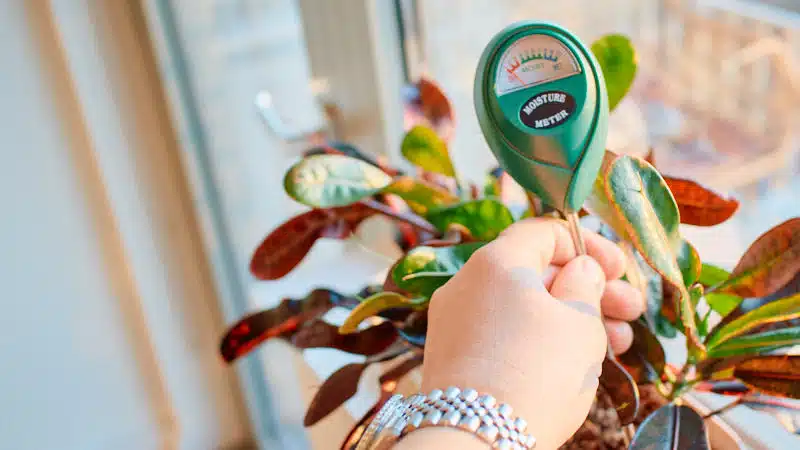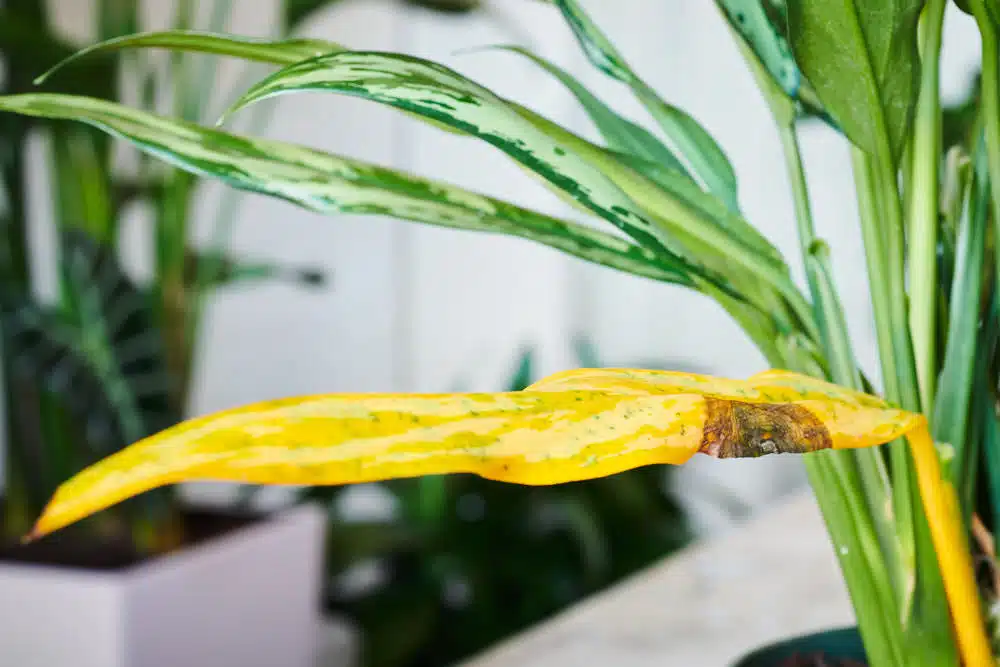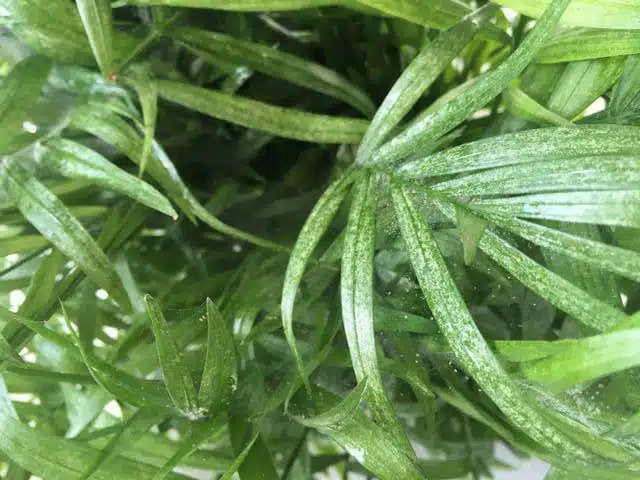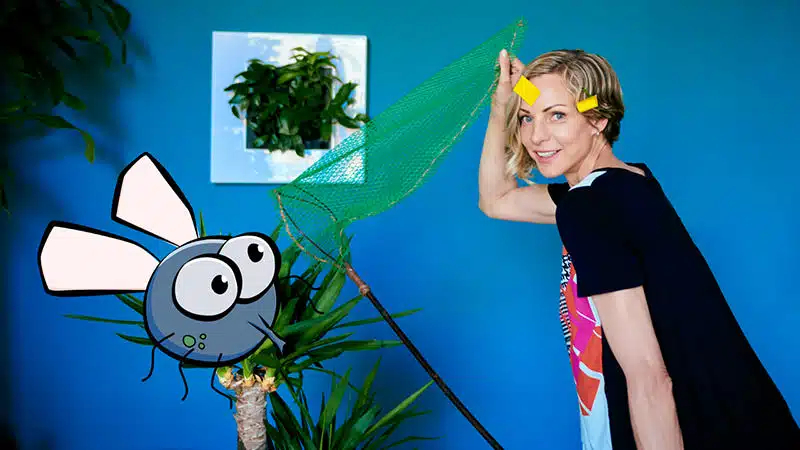Step 1: Understand the Watering Needs of Your Rubber Plant 💧
Rubber plants, or Ficus elastica, need to be watered on average once every 7 to 14 days.
But here’s the crucial tip: never stick to a strict watering schedule! Each plant has its own unique needs based on its environment.
Step 2: Use a Soil Moisture Meter for Accurate Readings 📏

The best way to determine if your Rubber plant is thirsty is to use a soil moisture meter. To do this:
- Insert the soil moisture meter into the soil as deep as possible.
- Check the readings in a few different spots around the pot.
If the reading falls between zones 3 and 4—three being the top of the dry zone and four marking the beginning of the moist zone—it’s time to water your plant!
Step 3: Monitor Seasonal Changes in Watering Frequency 🌸
During the active growth seasons, which are spring and summer, your Rubber plant will require more frequent watering. Conversely, in the winter months, you’ll want to reduce the watering frequency as the plant enters a dormant state.
Step 4: Recognize Signs of Underwatering ⚠️
Underwatering can lead to significant stress for your Rubber plant. One of the most noticeable signs is leaf drop. If you see your plant losing leaves, it might be a cry for help indicating it’s time for a drink!
Step 5: Identify Signs of Overwatering 🚫
On the flip side, overwatering can be just as detrimental. Look for leaves that are turning brown or yellow. If you notice these symptoms, it’s essential to check the soil moisture and adjust your watering habits accordingly.
Step 6: Ask Questions and Share Experiences 📣
If you’re still unsure about when to water your Rubber plant, don’t hesitate to ask! Share your experiences in the comments below. The plant community is here to help you thrive as a plant parent!
Frequently Asked Questions About Rubber Plant Watering ❓
How often should I water my rubber plant?
Typically, every 7-14 days, but always check the moisture level first.
What should I do if my rubber plant’s leaves are dropping?
This could be a sign of underwatering; increase watering frequency.
How can I tell if I’m overwatering my rubber plant?
Look for yellowing or browning leaves, which can indicate excess moisture.
Is a soil moisture meter necessary?
While not necessary, a soil moisture meter is a great tool to ensure you’re watering correctly.
By following these steps, you’ll have a thriving Rubber plant that adds beauty to your space. Remember, understanding your plant’s water needs is key to its health!
More Rubber Plant Care Tips:


























